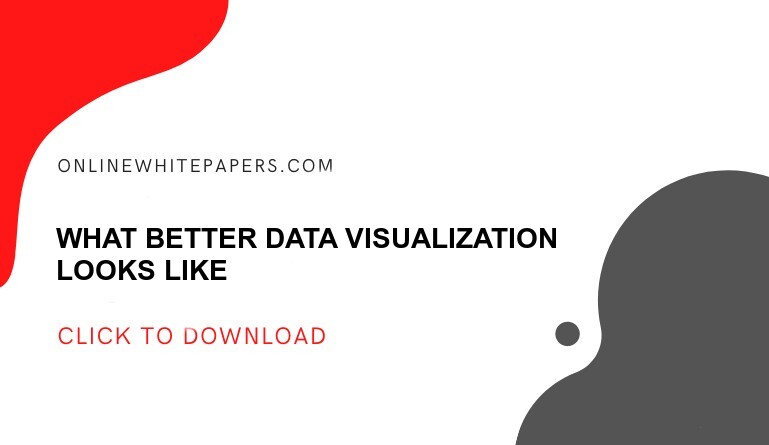Data is analyzed using visual representations in visual analytics by utilizing advanced tools and processes. A visual representation of data helps users recognize patterns and develop actionable insights. Insights such as these allow organizations to make more informed decisions.
Data visualization and visual analytics are often confused, but visual analytics goes deeper. Rather than relying on multiple sources, modern, interactive visual analytics enables users to combine data directly within the visualization and analyze it deeply. Additionally, AI algorithms can use the user’s interests to provide recommendations.
Why is Visual Analytics Important?
Data is displayed graphically and interactively in visual analytics to provide insight into the solution of a problem. Data scientists and other professionals use data visualization tools to identify trends, patterns, and relationships within the data they are analyzing.
By using drag-and-drop options, packaged software tools for visual analytics make it easier for non-technical users to use.
Business intelligence and business analytics initiatives use data management strategies to integrate, unify, and standardize data from a variety of sources. The applications should follow the same principles.
Data mining and big data analytics applications require monitoring and interaction across large, complex datasets, making visual analytics particularly useful.
The Visual Analytics Process
The systems are often employed together with other analytical approaches to successfully analyze and understand a single big data problem, such as machine learning and intelligence value estimation algorithms.
A few approaches and strategies for visualizing big data analytics include good mapping of semantics, abstraction, aggregated queries, incremental approximate queries, and transforming data into a functional or procedural model.
The process is typically divided into these steps: transformation, mapping, contribution selection, ranking, interaction, and visualization. This is dependent on the requirements of the visual analytics project.
Benefits of Visual Analytics
-
Sharing findings and tracking progress:
An organization’s key performance indicators can be tracked, analyzed, and shared through interactive reports and dashboards.
-
Faster decision-making:
The use of visual tools makes it easier for users to grasp data insights much faster.
-
Easy access to data:
Users can discover hidden relationships and patterns in the data using self-service analytics tools which allow them to interact with data in a visual context.
-
Educate people about data literacy:
Getting more people involved in data analytics through easy access to and understanding of data democratizes data analytics.
-
Identifying trends:
Data sets can be correlated to identify previously overlooked trends, outliers, and correlations, which may lead to a competitive advantage.
-
Improved efficiency:
Increasing the amount of data that can be consumed in less time improves operational efficiency.
Visual Analytics Examples
-
Trades
By using clean, organized sales data, sales managers can identify key trends, increase revenue, and improve forecasting.
-
Marketing
By letting a marketer see and understand the life cycle of the customer, visual analytics helps boost ROI.
-
Chain of Distribution
Supply chain managers can visualize and explore KPIs easily by surfacing data from complex, disparate sources and seeing links between them.
-
Set clear objectives
If you want to analyze visual data, you should set specific goals before you begin.
-
Data integration and management
Clean, business-ready data can only be obtained when your source data has been transformed. A data warehouse can serve as a repository for bringing standardized formats.
-
Visualize more easily
Your story should be presented in the simplest way possible using the appropriate visual technique.
-
Freely discover
If you want to explore the relationships in the data in any direction rather than being restricted to linear drill paths, you should choose a tool that lets you do it.
Difference between Visual Analytics and Data visualization
Visualizing data involves the use of various tools and techniques to help you identify patterns, make sense of difficult concepts, and make sense of data in an easy-to-understand manner. Advanced analytics rely on it in many ways.
An analytics data report, from which trends and metrics can be derived, is a broad umbrella term for the science of analyzing raw data to translate it into useful information.
Engineers, data scientists, and analysts gather, integrate, and prepare data to develop, test, and revise analytical models.
Although both data analytics and data visualization help you make sense of data, data visualizations are limited to the data that is fed into them.
Conclusion
By leveraging visual analytics, businesses can easily explore and understand enormous quantities of diverse data, uncover opportunities, optimize performance, and gain insights to make better strategic and tactical decisions.



